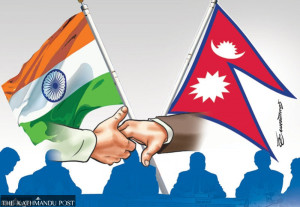Columns
Policy instruments have been effective
Monetary policy measures have been undermined because their objectives are misunderstood, or not understood at all.
Nara Bahadur Thapa
Monetary policy is a powerful tool that influences the performance of the national economy over different time horizons. But the general perception towards the role of monetary policy has been dismissive in the context of Nepal. Monetary policy measures have been undermined, not because they have been ineffective, but because their objectives, role and scope are either misunderstood or not understood at all.
The Nepal Rastra Bank Act 2002 has mandated the central bank to issue the annual monetary policy, and it has been doing so since the fiscal year 2002-03. Opinions differ on the issues the upcoming monetary policy for 2019-20 should focus on. Much of public discourse has been on non-monetary issues. As per multilateral institutions, Nepal’s informal economy accounts for 37 percent of the gross domestic product, and 45 percent of the population has access to financial services. Instead of focusing on macroeconomic objectives, including reducing the size of the informal economy and expanding access to finance through the judicious use of monetary instruments, much attention has been placed on mega-mergers which is not a monetary instrument, to begin with.
Policy instruments
Although little recognition is given, the monetary policy for 2018-19 is an example of the effectiveness of the judicious use of policy instruments to support economic growth. For instance, the reduction of the cash reserve ratio from 6 to 4 percent released central bank liquidity worth Rs50 billion to the market with the freedom given to individual banks to adjust the portfolio of their choice. This boosted bank credit to the private sector.
Another monetary tool used was refinancing, with its fund increased to Rs50 billion. Nepal Rastra Bank has been making refinance available at the general refinancing rate of 4 percent and the special refinancing rate of 1 percent. Those who obtain it at 4 percent cannot charge their borrowers an interest rate of more than 8 percent, and those who obtain it at 1 percent cannot charge more than 3 percent interest. Outstanding refinancing amounted to Rs25 billion as of May 2019, ensuring a larger credit allocation to strategically important priority sectors. The policy corridor aimed at limiting the volatility of liquidity and short-term interest rates is in place for injecting liquidity at the repo rate—the rate at which the central bank lends to commercial banks when they have a shortfall of funds—of 5 percent and mopping up liquidity at 3.5 percent.
As a result of these measures, the year-on-year credit growth of 22 percent became possible. This level of credit growth has underpinned the real gross domestic product growth of 6.8 percent in the face of lower than expected budgetary execution at all three levels of government.
Banking business model
Notwithstanding the positive macro outcomes, a negative narrative on monetary policy abounds on account of the uneven distribution of monetary policy benefits across regions, sectors and people. A banking business model is in place for judicious distribution of monetary policy benefits. However, the model is not properly working on account of an overreliance on commercial banks and the dilution of the role of development banks and finance companies. Commercial banks are meant to provide financing for international trade and corporations; development banks are for catering credit to small and medium-sized enterprises across the country. Meanwhile, finance companies are meant to extend consumer financing.
A policy thrust on consolidating the financial sector through mergers and acquisitions, and universal banking, among others, has caused the number of development banks to shrink from 88 in 2012 to 32 in May 2019. The number of finance companies decreased from 79 in 2010 to 24 in May 2019. Not only that, the number of development banks operating outside the Kathmandu Valley too declined from 71 in 2012 to 24 in July 2018. Surprisingly, some policymakers still openly advocate decimating development banks and finance companies. In a scenario where the chosen counterparties serve as the arms of Nepal Rastra Bank to conduct monetary policy, the sharp decline in the number of development banks and finance companies is analogous to the amputation of the central bank's arms.
Policy choices
Evaluating policy challenges is key to making policy choices. Regarding policy challenges, correcting the balance of payments deficit should be high on the agenda. Controlling the loan portfolio of banks and using macro-prudential measures are two policy choices for correcting it. The government wants to avoid using quantitative and foreign exchange payment restrictions excessively to control certain imports as Nepal has accepted the International Monetary Fund’s Article VIII obligations—which asks countries not to impose such curtailments—since 1994. Alternatively, the government wants to see Nepal Rastra Bank restricting trust receipt loans. However, the consequences of this policy action will result in increased transactions through informal channels, leading to further growth of the informal economy.
Promoting financial inclusion and augmenting financial resources for supporting the economic growth target of 8.5 percent are other policy challenges. Business leaders are complaining of a shortage of bank loans and high bank lending rates. The case for mega-mergers, especially of commercial banks, has been made to address some of these challenges. Considering the likely consequences of this type of market intervention, the question is whether its justification is answerable to the objective of promoting financial inclusion and reducing the size of shadow banking. Curtailing bank loans for some imports and pushing for further consolidation of banks will not only set a bad precedent but also have severe consequences. Therefore, an overemphasis on these types of interventions is likely to overshadow the monetary policy reaction function, hampering monetary policy for years to come.
Thapa is a former executive director of Nepal Rastra Bank




 21.12°C Kathmandu
21.12°C Kathmandu















